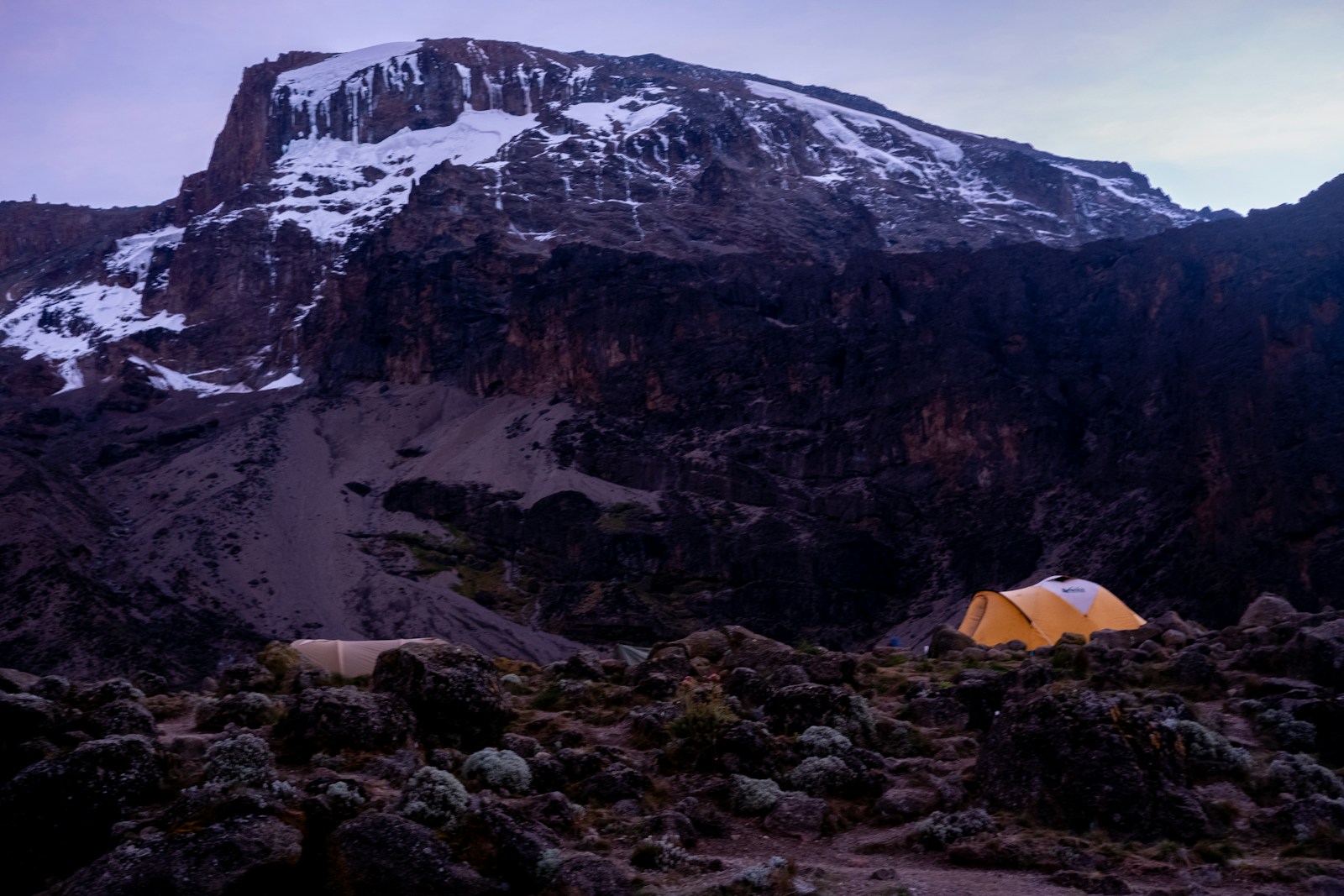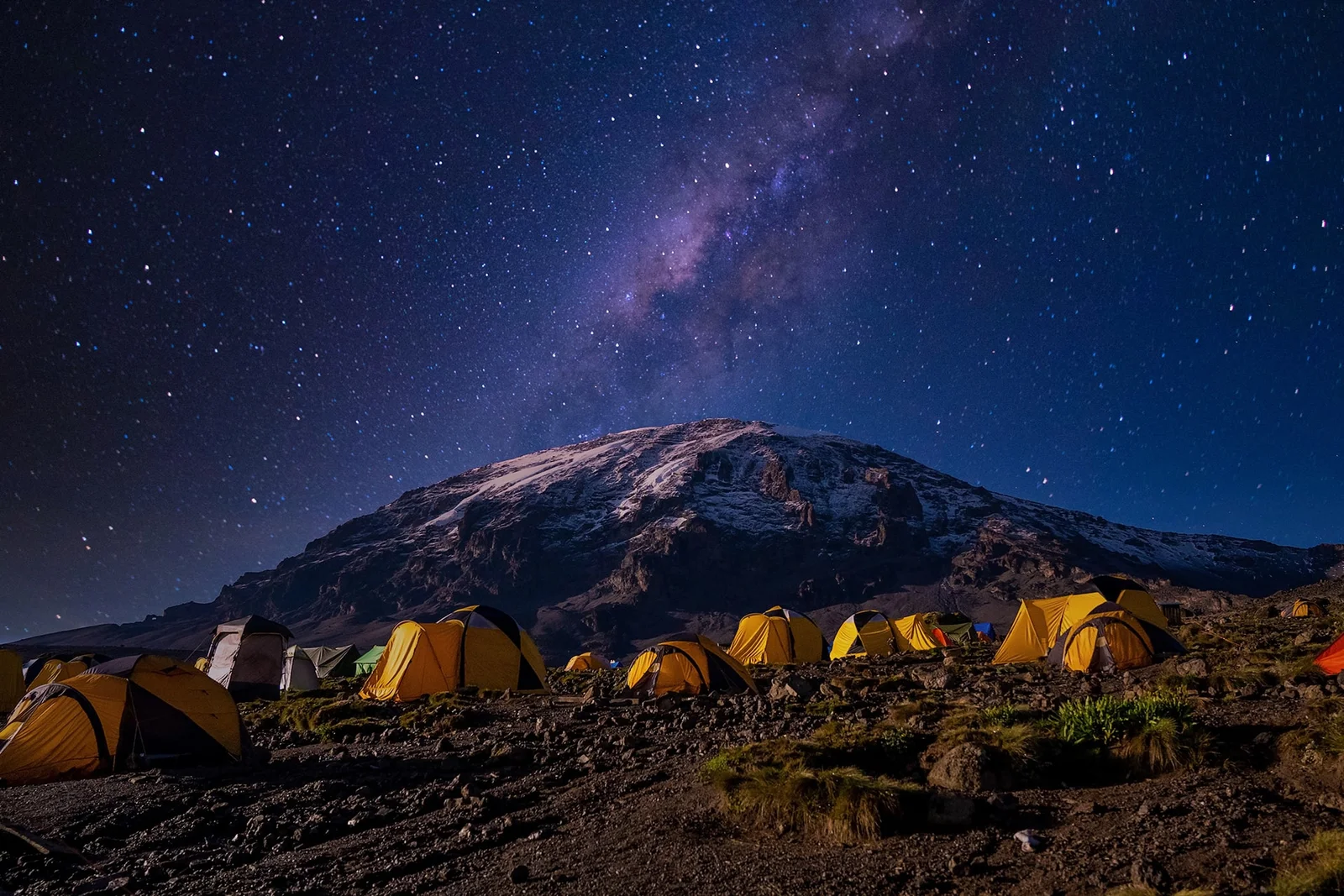6 Days Umbwe Route Kilimanjaro Climb
Duration: 6 Days | Price: From $2,050 USD | Difficulty: Challenging
Trip Overview
The Umbwe Route is Kilimanjaro’s most challenging and least-traveled trail, offering a thrilling, off-the-beaten-path ascent for experienced hikers.
Known for its steep terrain, fast elevation gain, and breathtaking ridge-line views, this route demands strong fitness and mental grit—but rewards with unmatched solitude and raw mountain beauty.
Starting from the lush rainforests at the base of the mountain, the trail quickly ascends through misty jungle and onto exposed ridges, offering dramatic scenery every step of the way.
By Day 2, the route joins the more popular Machame Route at Barranco Camp, continuing along the scenic Southern Circuit before the final summit push from Barafu Camp.
Because of the rapid ascent, the Umbwe Route is recommended for strong trekkers or those with prior high-altitude experience. It’s perfect for adventurers who want a less crowded and more intense climbing experience on Africa’s tallest peak.
Trip Highlight
Day 1: Arrive Kilimanjaro Airport, transfer to Arusha
Day 2: Drive to Kilimanjaro National Park Umbwe Gate, Hike to Umbwe Cave Camp
Day 3: Umbwe Cave Camp to Barranco Camp
Day 4: Hike Barranco Camp to Karanga Camp
Day 5: Hike Karanga Camp to Barafu Camp
Day 6: Hike Barafu Camp to Summit, down to Mweka Camp
Day 7: Hike Mweka Camp to Mweka Gate, drive to Arusha
Day 8: Depart Arusha
Itinerary – Day by Day
Day 1: Umbwe Gate to Umbwe Camp
Drive from Arusha to the Umbwe Gate (approx. 1.5 hours). The trail starts in lush rainforest and ascends sharply along a ridge. This is a steep and strenuous hike—poles and gaiters are recommended.
- Elevation: 1,800m / 5,900ft to 2,850m / 9,350ft
- Distance: 11 km / 7 mi
- Hiking Time: 5–7 hours
- Habitat: Montane Forest
- Meals: Lunch, Dinner
- Overnight: Umbwe Camp
Day 2: Umbwe Camp to Barranco Camp
The trail gets steeper as you leave the forest behind and enter the heather and moorland zone. You’ll continue along a ridge before dropping slightly into the scenic Barranco Valley. This is where the Umbwe Route joins the Machame Route.
- Elevation: 2,850m / 9,350ft to 3,900m / 12,800ft
- Distance: 6 km / 4 mi
- Hiking Time: 4–5 hours
- Habitat: Moorland
- Meals: Breakfast, Lunch, Dinner
- Overnight: Barranco Camp
Day 3: Barranco Camp to Karanga Camp
Ascend the Barranco Wall—a non-technical but thrilling scramble—before continuing through alpine desert terrain to Karanga Camp. This day includes several short ascents and descents and is key for acclimatization.
- Elevation: 3,900m / 12,800ft to 4,050m / 13,250ft
- Distance: 5 km / 3 mi
- Hiking Time: 4–5 hours
- Habitat: Alpine Desert
- Meals: Breakfast, Lunch, Dinner
- Overnight: Karanga Camp
Day 4: Karanga Camp to Barafu Camp
Climb steadily to Barafu Camp, your base for the summit attempt. Enjoy views of Mawenzi and Kibo peaks along the way. Rest, hydrate, and prepare for the early morning climb to the top.
- Elevation: 4,050m / 13,250ft to 4,700m / 15,350ft
- Distance: 4 km / 2 mi
- Hiking Time: 3–4 hours
- Habitat: Alpine Desert
- Meals: Breakfast, Lunch, Dinner
- Overnight: Barafu Camp
Day 5: Summit to Uhuru Peak, then descend to Mweka Camp
Begin your summit push around midnight. Trek through scree to Stella Point, then continue along the crater rim to Uhuru Peak—the highest point in Africa. After celebrating at the summit, descend to Barafu for lunch, then continue down to Mweka Camp.
- Elevation: 4,700m / 15,350ft to 5,895m / 19,340ft (Uhuru Peak)
- Descent to: 3,090m / 10,150ft
- Distance: 5 km / 3 mi (ascent), 13 km / 8 mi (descent)
- Hiking Time: 6–8 hours up, 5–6 hours down
- Habitat: Arctic to Montane Forest
- Meals: Breakfast, Lunch, Dinner
- Overnight: Mweka Camp
Day 6: Mweka Camp to Mweka Gate, drive to Arusha
Complete your final descent through the rainforest to Mweka Gate, where you’ll receive your summit certificate. From there, a short transfer takes you back to your hotel in Arusha for a well-earned rest.
- Elevation: 3,090m / 10,150ft to 1,680m / 5,500ft
- Distance: 10 km / 6 mi
- Hiking Time: 3–4 hours
- Habitat: Forest
- Meals: Breakfast
book this Kilimanjaro Climb
Tailor-Made Tours for Ultimate Adventures
Made to measure
We are Experience & Vacation Designers
Our team of highly experienced travel designers will guide you from beginning to end as you embark on a tailor-made journey of distinction, enjoying truly exclusive and authentic cultural experiences.
We can fulfill your bucket-list dreams, let get in touch.
Our guides are highly experienced, knowledgeable about wildlife and culture, and passionate about delivering the best safari experience. They are also trained in safety and hospitality to ensure an unforgettable adventure.
The best time depends on what you want to experience Tanzania. The dry season (June to October) is ideal for wildlife viewing, while the green season (November to May) offers lush landscapes and fewer crowds.
Absolutely! We offer flexible itineraries that allow you to extend your trip or tailor it to include additional destinations, activities, or cultural experiences.
Yes! Our luxury safaris include downtime at comfortable lodges, camps, or resorts where you can unwind, enjoy spa treatments, or relax by the pool between game drives.
Discover unforgettable Tanzania safari tours with Lion Track Safari
Our Best Tanzania Safari Tours & Packages
Choose from our extensive range of holiday options to create the holiday that’s right for you. Let us take the guesswork out of planning your next trip.
- Destinations visited:
- Arusha City
- Tarangire National Park
- Ngorongoro Crater
- Lake Manyara National Park
- Best Time to Visit:
- All Year Around
- from $1,359 per person
- 3 Days 2 Nights
- Destinations visited:
- Arusha City
- Tarangire National Park
- Lake Manyara National Park
- Ngorongoro Crater
- Best Time to Visit:
- All Year Around
- from $1,373 per person
- 4 Days 3 Nights
- Destinations visited:
- Stone Town Tour
- Jozani Forest
- Nungwi Beach
- Old Slave Market
- Best Time to Visit:
- Seasonal
- from $2,544 per person
- 5 Days 4 Nights
- Places visited:
- Londorossi Gate
- Mti Mkubwa - Shira 1 & 2 Camp
- Barranco - Karanga - Barafu Camp
- Uhuru Peak - Mweka Camp - Gate
- Best Time to Visit:
- All Year Around
- from $3,379 per person
- 7 Days 6 Nights
We have many other holiday tour packages
EXCELLENTVerified A superb safari! We spent a week of safari with Pastory, very friendly , very attentive , very cultivated on the fauna and flora , he will also take you as close as possible to the animals , in addition to being very good driver , he has a lot of humor and speaks very well French , we highly recommend you , this safari will remain one of our most beautiful trips thank you PastoryPosted onVerified Amazing safari! Amazing week spent with Pastory! A very nice guide who made us discover the different parks of Tanzania and spots great animals!Posted onVerified Fantastic!! Thank you Pastori!! We just had a wonderful time living in this beautiful country. Many thanks to Pastori our guide during these 3 days. It is so simple to talk with him, he transmits his passion for fauna and flora.Don't hesitate! Go ahead!Posted onVerified Safari Tanzania Great adventure! Total change of scenery and Pastori, in addition to being charismatic, knows perfectly how to meet all our demands. Everything was perfect on this safari.Posted onVerified Authenticity and sharing An unforgettable experience 🤩 with an authentic and friendly guide with the people he accompanies and lovers of animals. Pastory introduced us to Tanzania, its colors, values, landscapes, treasures, with its humane look. A big thank you to him 🙏Posted onVerified Fabulous Exceptional trip. It's really the trip of a lifetime.Landscapes, animals, the kindness of Tanzanians.We will keep all these beautiful moments for life. And our Pastory guide has a lot to do with it. An exceptional man with a poignant background. He is patient, kind, ultra efficient in the search for animals, full of humor and above all he gives real explanations to our questions. Thanks again for everything and full of happiness to you.Posted onVerified An excellent Francophone guide Pastory is a very professional and really friendly Francophone guide. He is very familiar with Tanzanian wildlife and culture. It drives smoothly and safely. I can only recommend it to discover Tanzanian parks.Posted onVerified Unforgettable week of safaris We spent a week on safaris in Tanzania and have a wonderful memory of it. We were accompanied by a remarkable Francophone Guide, Pastori, who enchanted our days with his skills, knowledge, patience... and his eagle’s eye view to spot the animals in the three parks visits.He also took us back to Kilimanjaro airport.We recommend Pastori to 300% and thank him again warmly for all the extraordinary times spent with him.Posted onVerified The Best (and Friendliest) Guide to Tanzania We had an unforgettable time for our honeymoon in the most beautiful Tanzanian nature reserves and accompanied by the best Francophone Guide! Always smiling and listening to your desires Pastori knows by heart the animals of the savannah and knows how to orient us without difficulty to see them! Memories that will remain etched in our memories in addition to that of our camera!Posted onVerified Northern Safari Tanzania Best French Guide in Tanzania. Pastori allowed us to see unexpected things. Always listening and smiling. Very good vehicle without worries. Recommended absolutely.
Our Blog
Latest Travel News & Articles
Need Travel Related Tips & Information
Get expert travel tips and essential information for a seamless adventure.

